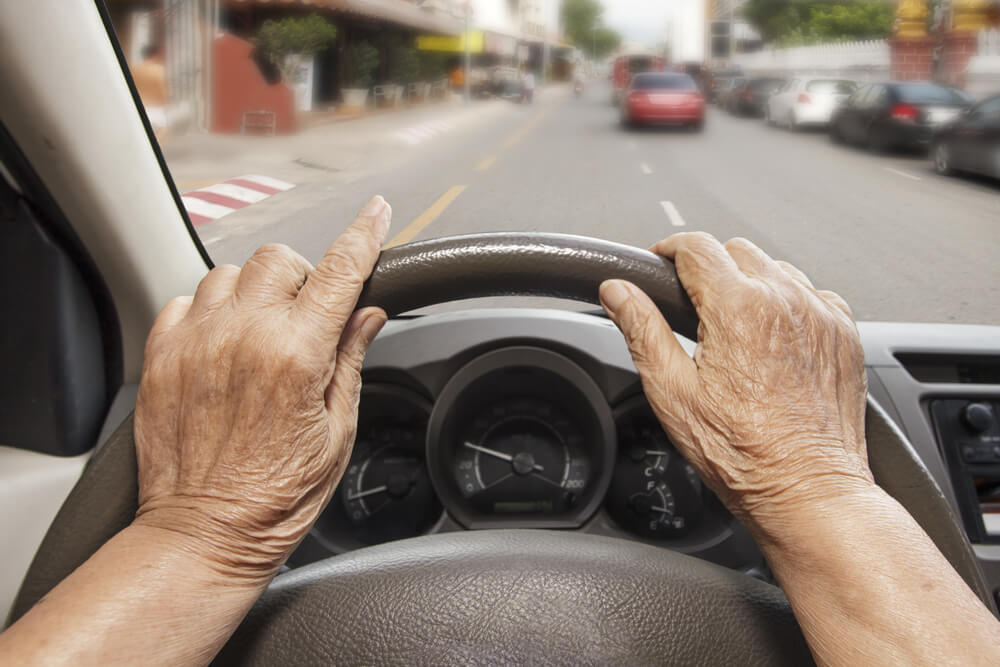Glaucoma patients typically experience problems such as light sensitivity (photophobia) and glare. These problems sometimes make the outdoor activities more challenging and difficult. Light sensitivity is thought to arise from the pressure build up in your eye. Although, this is typically the case in patients with very high eye pressures, in the vast majority of cases we are not certain why photophobia and glare symptoms occur in glaucoma patients.
Patients who experience light sensitivity typically feel discomfort from sunlight, incandescent light and/or fluorescent lights. LED lights, like those used in car headlights and fluorescent lighting or fixtures can cause an uncomfortable glare for those with glaucoma. Glare can also result off surfaces such as sand, water, roads and glass. Additionally, certain medications that constrict the pupils can add to glare symptoms. There are, however, ways of managing these symptoms.

The use of sunglasses is the easiest way for patient to relieve the discomfort caused by glare and light sensitivity. Protecting the eyes from UV light rays is important for everyone, especially those with other eye problems. Knowing what features to look for will help you alleviate your glaucoma symptoms.
Sunglasses for Glaucoma Patients
Cost and color (darkness) of sunglasses are not necessarily good determining factors for effectiveness. Expensive sunglasses do not always provide the best eye protection, and a dark tint doesn’t always block UV rays adequately.
Following these sunglass tips will help you acquire the best eyewear for managing glaucoma:
- When purchasing sunglasses, be sure the label states that they provide 99-100% blockage of UV rays or “UV absorption up to 400 nm” – this is 100% absorption.
- Consider wraparound sunglasses for extra protection, as they help prevent light and UV rays from entering through the sides.
- To ensure that enough light and glare are screened out, look in the mirror while wearing the sunglasses. If you can easily see your eyes through the lenses, they may not be dark enough for outdoors.
- Use attachable tinted lenses for different types of lighting. Yellow, amber, or brown tints are effective at cutting glare from fluorescent lights, while darker shades may be needed outdoors on a bright day. Experiment with tints to see what work best for you since needs are varied for the different types of glaucoma.
Your glaucoma specialist can assist you with additional information about tinted lenses.
Other sunglass features that can benefit glaucoma patients include:
- Mirrored/metallic coating: Helpful in high-glare situations and reduces how much visible light enters the eyes
- Polarized: Cuts reflected glare and can be especially beneficial while driving, on water, or in snowy environments
- Gradient: Shaded darker on top (or top and bottom) and lighter in the middle, allowing good visibility while cutting glare from above or below
- Photochromic: Lenses which darken in bright lights and lighten in lower lighting
Driving with Glaucoma
Glare problems and light sensitivity from glaucoma can be a serious complication while driving. Many glaucoma patients choose to avoid night driving due to the headlight glare making it difficult to see well at night. If lightly tinted (yellow or amber) eyewear does not reduce headlight glare, you may need to consider rearranging your schedule to drive during the day or asking a friend or relative to drive you. Anti-reflective coats can also be applied to non-tinted glasses that are used at night to help reduce glare. For day driving, many glaucoma patients successfully utilize darker lenses to reduce sunlight glare and sensitivity.

Warning signs that driving may be dangerous include:
- Loss of peripheral vision: Without full vision, drivers may have difficulty seeing obstacles, other vehicles, or pedestrians from the side. Reaction time may also be affected.
- Blurred vision: If vision is becoming blurry, drivers may not be able to distinguish images clearly, such as pedestrians, passing cars, and road signs.
- Increased light sensitivity: If your eyes are requiring longer periods of time to adjust to sunlight or headlight glare, you may need to limit driving.
- Close calls or vehicular accidents: If you begin to experience near misses or are involved in one or more collisions in which you are at fault, you may need to have your driving evaluated.
If you are a glaucoma patient that is concerned about your driving, ask a trusted friend or family member to ride with you and evaluate your driving. Be prepared to accept advice that is given to you, whether good or bad. Your safety and the safety of those around you are of most upmost concern. Giving up your car in this day and age doesn’t mean giving up your independence. In fact it may be cheaper and safer to use public transport options along with ride share options and ride-hailing technologies such as Uber and Lyft.
Here are two resources that can help you evaluate your driving skills.
American Association of Retired Persons
Driver Safety Program
http://www.aarp.org/families/driver_safety/
800-424-3410
AAA Foundation for Traffic Safety
Drivers 65 Plus: Test Your Own Performance.
Available as a brochure and other information is available at
https://seniordriving.aaa.com/
(202) 638-5944
Ultimately, one may need to stop driving as the vision is simply not good enough. Each state has its own standards in terms of visual acuity (how well one sees) and visual field (how much ones sees). One may simply not meet the minimal standards of vision to safely operate a motor vehicle. At Michigan Glaucoma & Cataract, we can measure these parameters and objectively inform whether you qualify to operate a vehicle.
If you are experiencing symptoms of glare, light sensitivity or trouble with driving. If you are concerned that you may have glaucoma, contact the fellow-trained ophthalmologists at Michigan Glaucoma & Cataract for an evaluation.

